Many of our objects speak to the rich heritage of the Scots language. Whether you came to see our ‘flauchters’ or were ‘conflummixt’ by our collection of ‘creepies’ or ‘crusies’, many of these object names have a beguiling origin and unexpected uses far removed from their original purpose. In this blog post, Assistant Curator of Modern and Contemporary Scottish History & Archaeology Oliver Taylor tells us the stories behind Scots words for household objects.
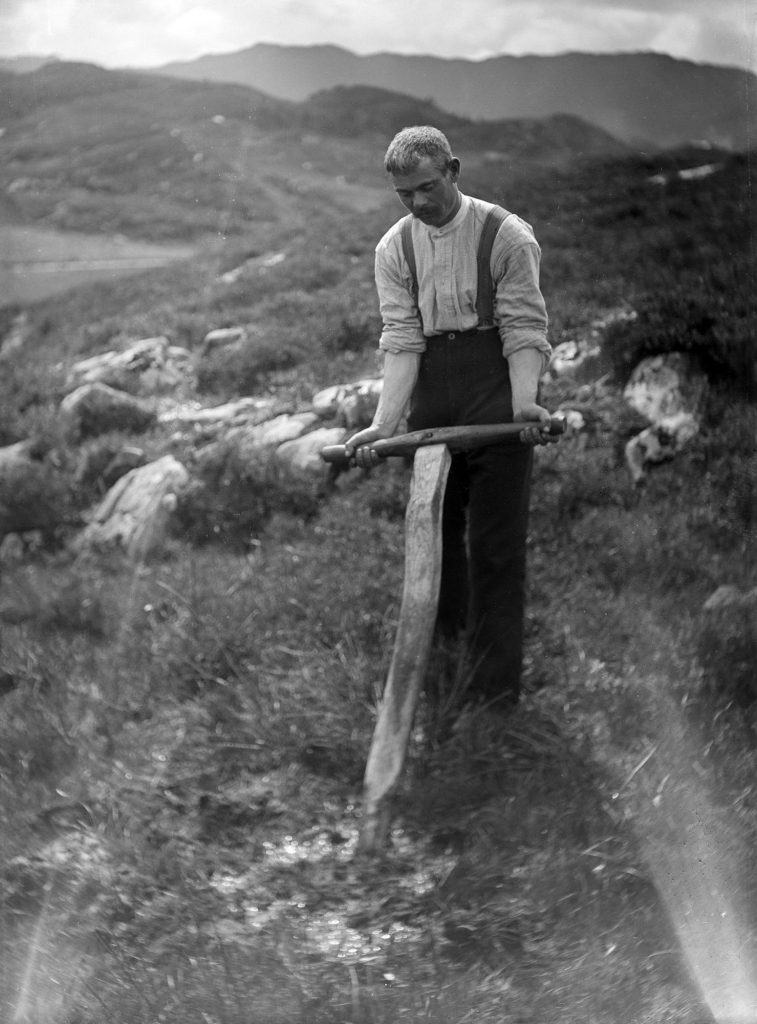
The Scottish history collection is filled with ‘ordinary’ objects, many of which we still use today. However, the Scots words for them may be unfamiliar to us. For example, if I were to enjoy a bowl of porridge, I might ask for it in a ‘coggie’ in western Fife. If I was in Shetland I’d ask for it in a ‘bicker’. Coggie likely gets its name from the old Norse ‘kaggi’ (meaning ‘keg’ or ‘cask’), and ‘bicker’ comes from the Latin ‘bickerium’ (a vessel for drinking or storing liquor). These variations reflect how the language has been shaped by how different communities across the country used an object. They also show how interactions with people from outwith Scotland, for example the Norse who settled in Shetland, determined what word it became known by.
In the process of researching the origins of these names, I have come to realise that there is more to these objects than meets the eye. Many objects that were once part of daily life became imbued with special significance that surfaced in superstitious practises, likely because they were objects that were always to hand.
The riddle
Take the ‘riddle’ (in Scots, ‘riddil’) a large sieve. Unsurprisingly, the word’s meaning comes from ‘to sift’, and the riddle was used in the field for dressing potatoes and in mines for sifting ore. This item played an important role in the everyday life of Scottish households. The spelling of the word varies depending on where it was spoken in Scotland, but seems to have been fixed at riddle, the same as in English, after 1700.
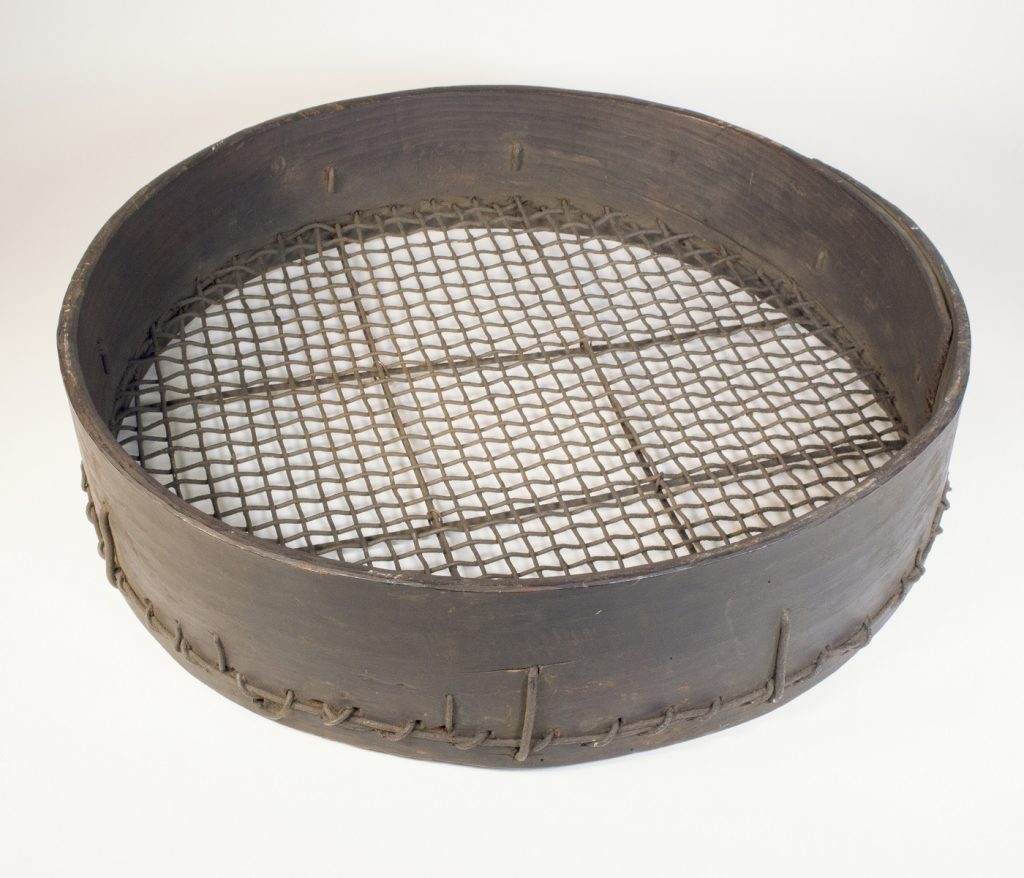
When not dressing potatoes or sifting coal, several sources reference the riddle’s use in divination, the practice of seeking knowledge by supernatural means. Called ‘turning the riddle’, the use of the riddle and shears has a long legacy, originally practised in Ancient Greece, and is known as ‘coscinomancy’. To perform the ritual, the riddle was placed on its side and a pair of scissors fixed in it so that it could be held aloft. Two people held the scissors at each handle and said, “By St. Paul and St. Peter, did they steal my yarn?”. If the riddle moved, then the named person was guilty. In early 19th century Fife, an individual was said to have turned the riddle to work out if their yarn had been stolen. Violet Brown of Perth was tried at court for turning the riddle in 1591 to find a gold coin. This act warranted a trial as it was regarded as witchcraft and as devilry against the word of God, serious misdemeanours in a society influenced by the Kirk.
In Shetland, the riddle could be used to find a husband. If someone were to ‘sifter the siller’, (sift silver) they would go into a darkened room and place a few silver coins onto a riddle. To ‘sifter’ means to fumble around in the dark or to feel your way. The sifter would then stand by a window and move the riddle in a circular motion whilst repeating, “I, if I be ta get a man, may he pass by”. If a man passed by the window of the utterer of the rhyme, they would get the man.
The creepie
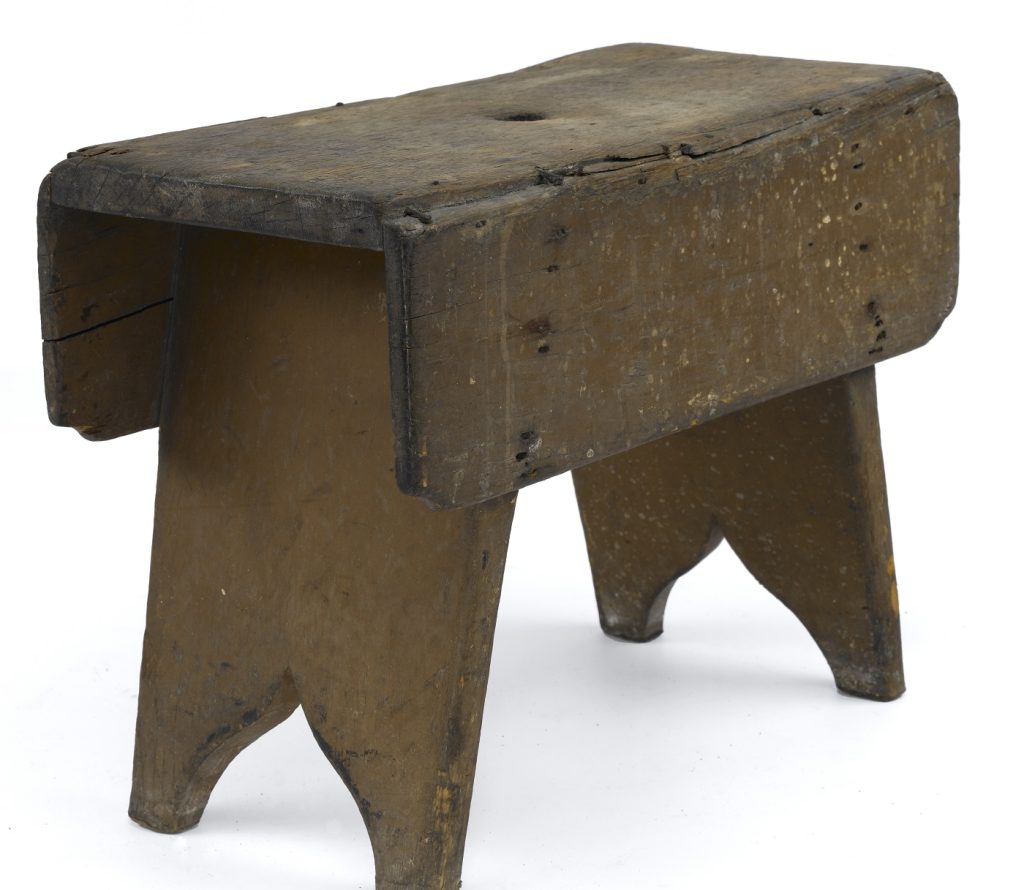
Consider the creepie stool, also known as a ‘currie’ stool. Like the riddle, their use exceeded their traditional role. There are differing ideas on where the word creepie comes from. One theory is that it comes from the old French word ‘trepied’ which itself comes from the Latin ‘triped’ or three footed (many examples of creepies do have three feet). French had a significant influence on Scots vocabulary as it did with English, though many words remained in use in Scots but not in English: ‘houlat’ (owl), and ‘ashet’ ( a large plate) are two examples.
Another theory suggests the name comes from the Scots word ‘coor’ for crouch. Given how low to the ground they are, you would almost be crouching when you sat upon it. These stools were small so that they could be manoeuvred easily, and were arguably low enough to comfortably sit below the smoke that used to fill some homes from the burning coal or peat.
The creepie’s transportability was part of its charm. Before fixed pews were introduced to kirk buildings in the 18th century (‘kirk’ is Scots for a Presbyterian place of worship), creepies were taken to sit on. In 1637, one creepie found fame after allegedly being flung in protest by Jenny Geddes at the minister in St Giles Cathedral in Edinburgh, an event which epitomised the widespread grievances that led to the War of the Three Kingdoms (often, erroneously, called the ‘English Civil War’). The phrase, “to have your hair combed with a creepie”, may allude to this incident, as it means to be hit over the head with a creepie.

Robert Burns, one of the best-known Scots writers, was all too familiar with the creepie. They were used as repentance stools in the kirk, and when someone had sinned, they were made to sit on the creepie chair in front of their community and atone. He included a special mention to the creepie in his poem, The Rantin’ Dog:
When I mount the creepie-chair,
Wha will sit beside me there?
Gie me Rob, I’ll seek nae mair,
The rantin’ dog, the daddie o’t

Given how common they were, it’s unsurprising that creepies feature in some unusual practises. In the Highlands, people were known to visit a crossroads with their creepie. When it got to midnight, it was said the individual would hear the names of those in the parish that wouldn’t make to their next birthday. If the person with the stool carried clothes of those poor souls named and threw them away, they could save them from their fate.
In Fair Isle, rituals associated with the creepie were less a matter of life and death. Children would put their fingers in the hole in the top of the seat and sing a rhyme, “Pit de finger in da craw’s hol e tha craw’s no’ hame, da craw’s at the back dor pickin on a been” (“Put the finger in the crow’s hole that the crow’s not home, the crow’s at the back door picking on a bean”).
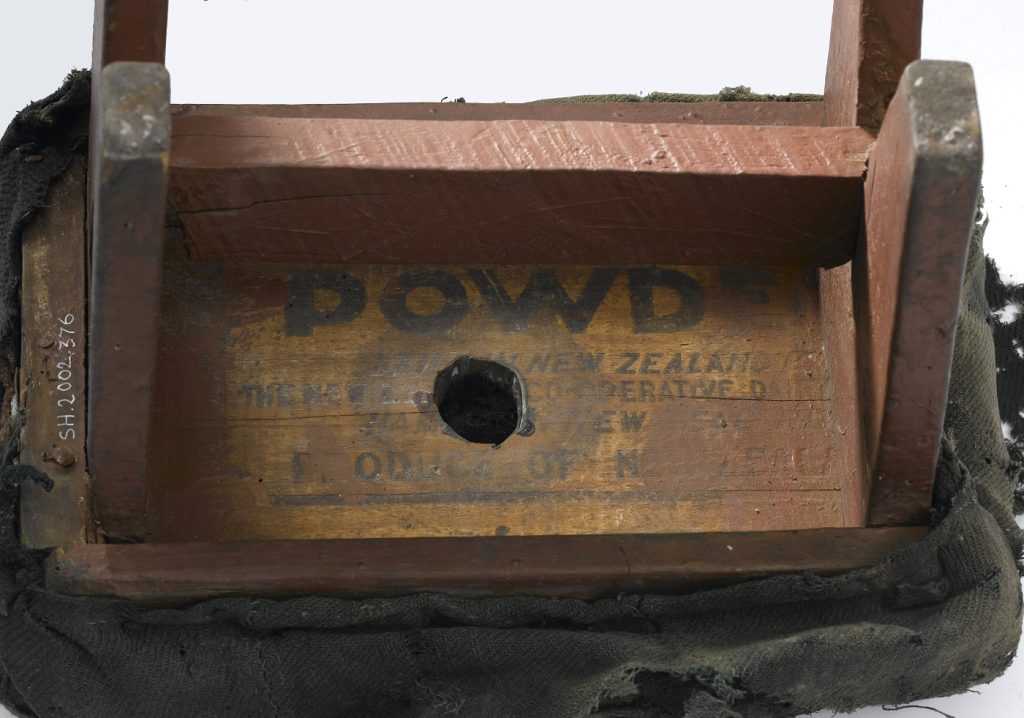
Creepies from places such as Fair Isle, and the other Northern Isles of Orkney and Shetland, were often made from a range of different woods as there was a lack of material growing naturally on the islands. An example in the museum’s collections is a box for milk powder. They were often painted in one colour to disguise their rudimentary construction.
Given their seafaring connections, the Northern Isles were awash with material from other countries. These items were given their own Scots names that reflected their origins. In Shetland for example, a ‘Norwaladie’ is a plain wooden item from Scandinavia. Russian wooden bowls, typically painted black and red, were known as ‘Scovieware’ as they were from Muscovy.
The cruik

Ideally your creepie would be as close to the hearth as possible, potentially in the ‘inglenook’. The inglenook is the recess in front of the fire and comes from the Scots word for a domestic fire. Its origin is the Gaelic word, ‘aingeal’. Gaelic is another language that has left an impression on Scots, unsurprisingly given the closeness of the areas they have traditionally been spoken.
Other Gaelic words that have been borrowed by Scots are the more familiar ‘loch’ and the less familiar ‘spleuchan’, the latter meaning tobacco pouch. Stories were shared in the closeness of the inglenook as the cooking pot bubbled away. The cooking pot was suspended on a ‘cruik’. A cruik or ‘cruke’, is a type of cooking pot hook which has linguistic roots in the old Icelandic word ‘krōkr’.
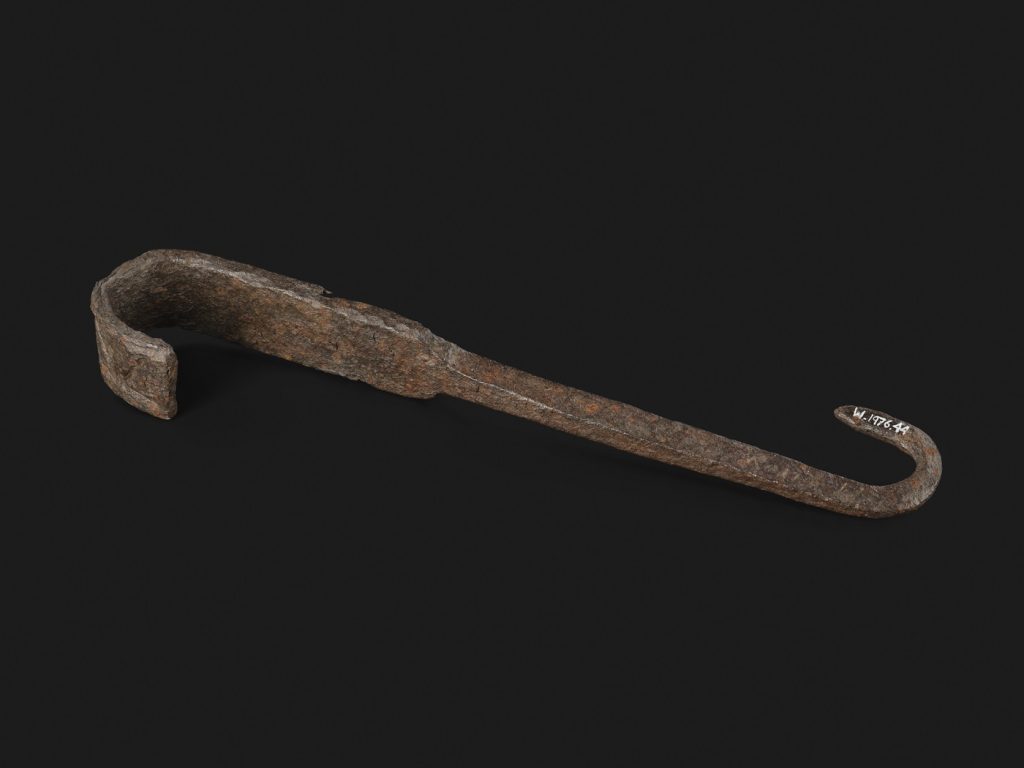
A person’s wealth could be expressed by the strength of their cruik, since it showed off how much money they could lavish on a blacksmith. The blacksmiths would demonstrate their skill by decorating cruiks with unique designs, such as the zig-zag pattern on the example below. Many of the cruiks in our collections are from ruined crofts in the northern Highlands. At abandoned dwellings, these robust cruiks are often one of the few reminders that someone had once lived there.
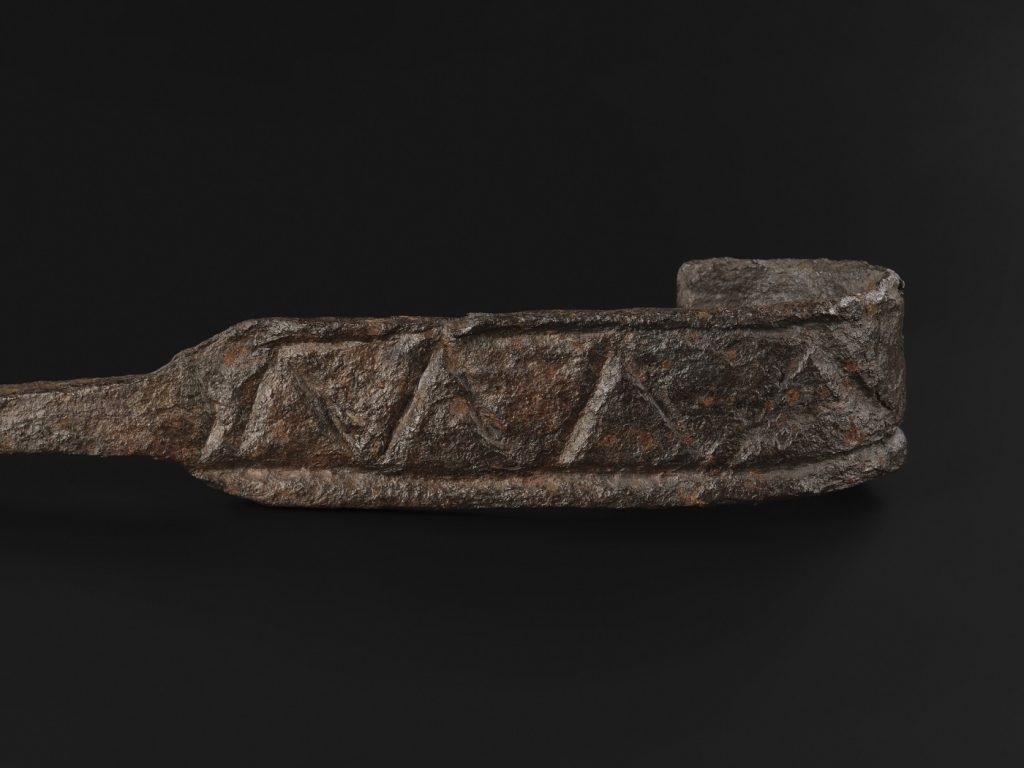
Owing to their importance in the household, the ordinary cruik became the focus of much attention. Many came to believe that the cruik was the home of a mischievous fairy, or ‘brownie’, known as , ‘The-wag-at-the-wa’. It got its name as it would wag on the cruik, making it swing back and forth. If there was a death in the family the brownie would stop their wagging. Many were wary of the brownie’s presence and would avoid moving the cruik excessively as it encouraged them to return. To discourage the brownie further, people took to marking the symbol of the cross onto the cruik.

Such was the cruik’s power that new-born babies were sometimes placed in a basket along with bread and cheese and were moved three times around the cruik. This was done to prevent any evil acts by spirits or witches. People may have used the cruik for this purpose given that items of iron and steel were thought to be effective against harmful forces. This is one of the reasons that people used to put nails into their bedframe as it would prevent elves from reaching women and babies.
In making the cruik the home to a mischievous brownie, Scottish parents may have been attempting to keep their children away from the danger of a hot pot over a fire. Despite this, it was common for children to swing off the cruik for fun when they were left alone.
Whilst the Scots words in this blog refer to historic items, Scots continues to thrive as a modern language. In the future, new words for items that have entered into the Scots lexicon may find themselves represented within the collection. We would not want to be accused of ‘numptitude’ to neglect to collect a pair of ‘baffies’ or any items that furnished a ‘sitooterie’!

